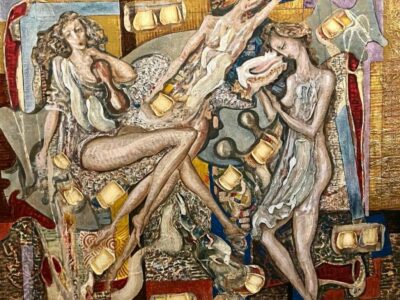The painting “The Three Graces” is a classical motif in art, depicting three female figures representing grace, beauty, and charm. The concept originates from Greek mythology, where the Graces (or Charites) were goddesses associated with qualities such as elegance, joy, and creativity.
The painting typically features three young women standing closely together or intertwined in a harmonious pose. They are usually depicted nude or semi- nude, symbolizing natural beauty and purity.
The Graces are often shown in a graceful and fluid posture, emphasizing their elegance and charm. Their poses may convey a sense of movement and rhythm.
In some interpretations, each Grace may hold symbolic attributes:
(Joy or Mirth): Often depicted with flowers or a wreath, symbolizing joy and happiness.
(Blooming or Good Cheer): Holding symbols of festivity or abundance, representing flourishing and prosperity.
(Splendor or Beauty): Often adorned with jewels or a mirror, symbolizing beauty and adornment.
The background of the painting may vary, but it often features a serene and idyllic landscape or a neutral backdrop that emphasizes the figures.
Artists throughout history have portrayed the Three Graces in various artistic styles, from classical Greek and Roman sculpture to Renaissance paintings and beyond. Each rendition reflects the cultural and aesthetic sensibilities of its time.
“The Three Graces” continues to inspire artists and viewers alike, embodying timeless ideals of beauty, elegance, and grace across different artistic movements and interpretations.
BUY THE PAINTING










